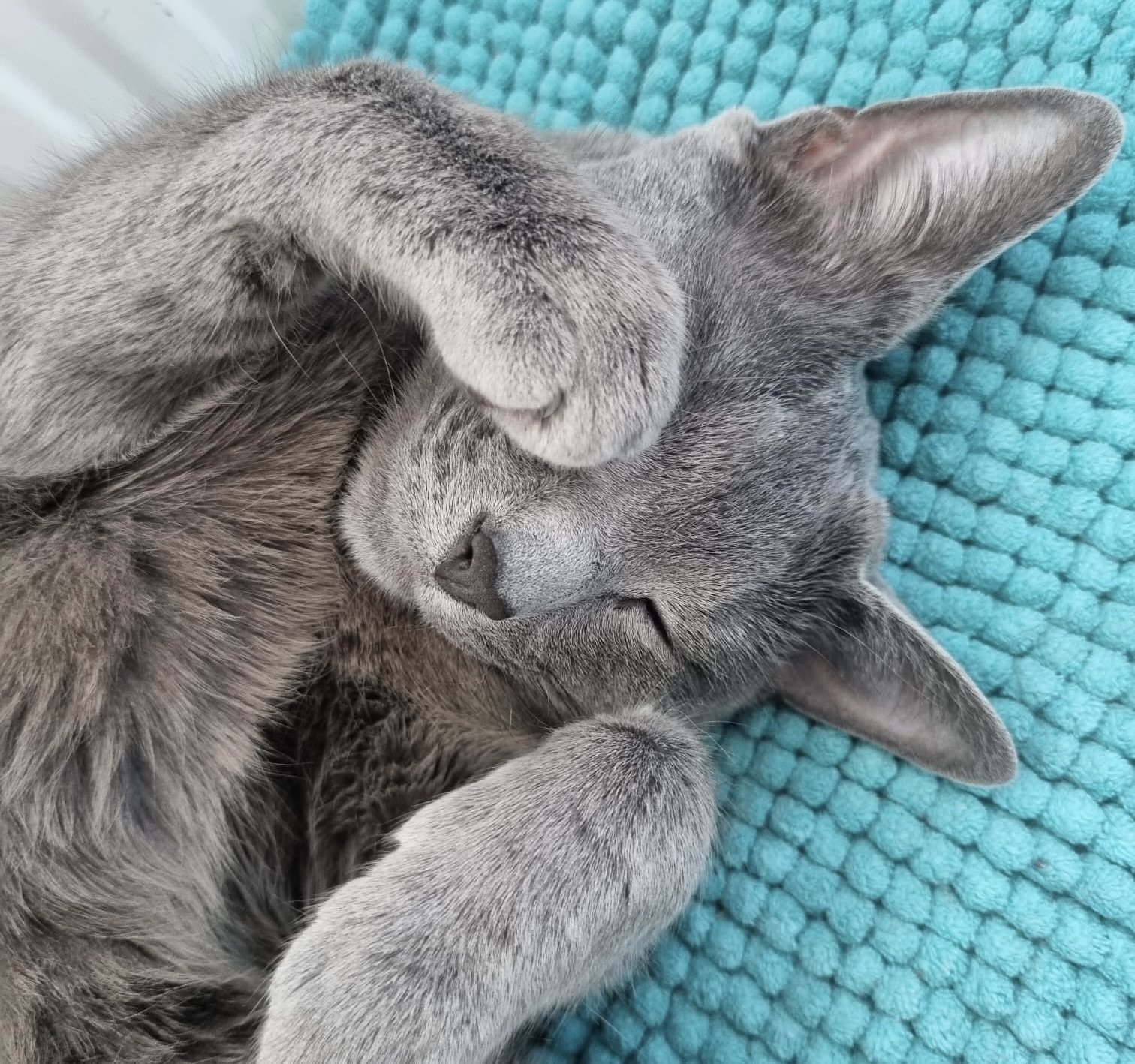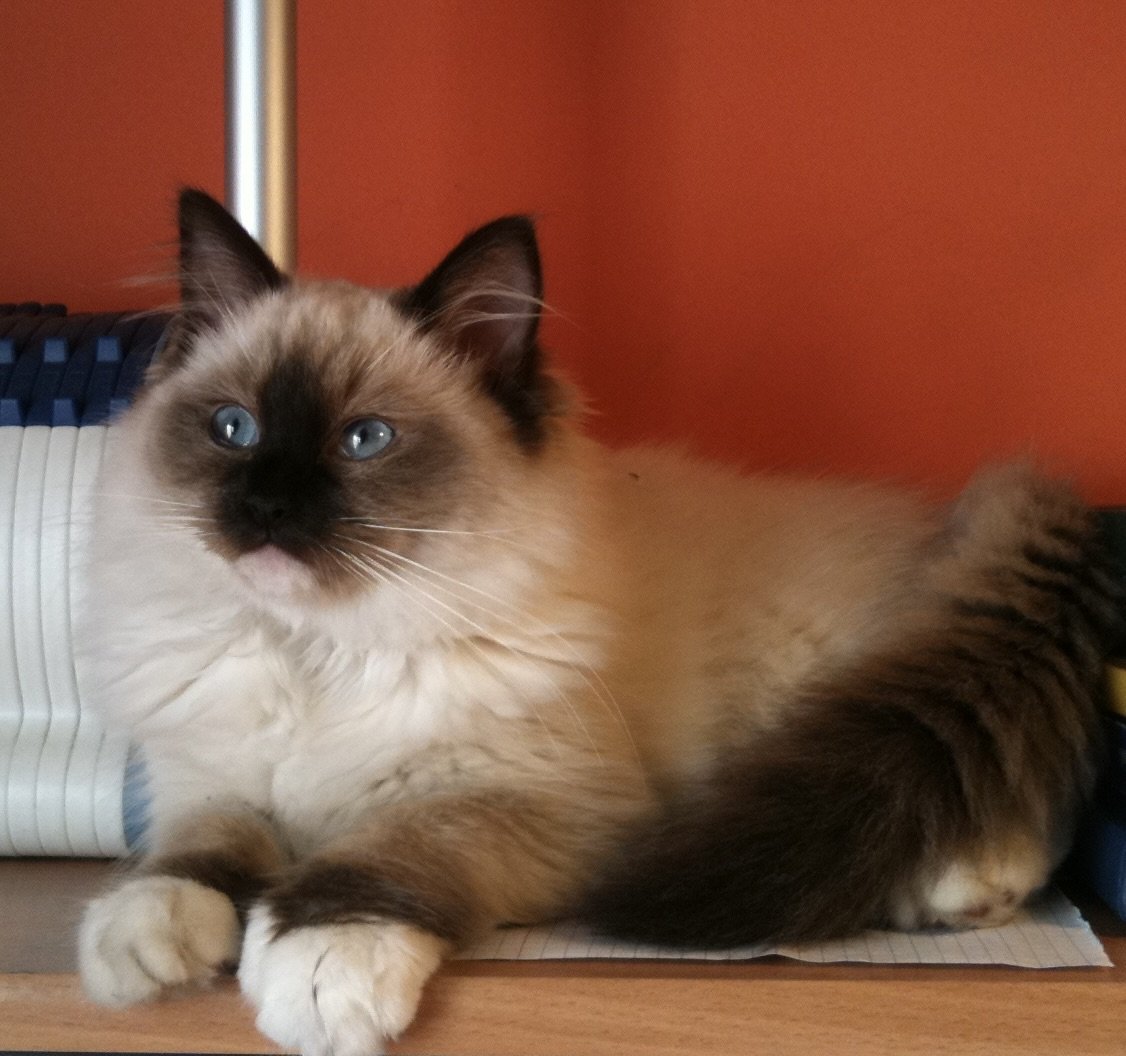
Filters
CLEAR ALLRecognized for their intelligence, Thais are a remarkably people-oriented cat breed that succeeds in being involved in everything that happens in their environment.
Thai cats are a vocal breed that will meet and greet you at the door and tell you everything about their day. They love spending time with their human companion and blossom on love and attention. Because they form such deep bonds with their owners, they do not like being left alone for any length of time. Their outgoing, loving, laidback personalities make them the ideal breed for families with older children.
Thai cats are very energetic, athletic, curious, and sometimes mischievous. They are excellent jumpers and will willingly learn to open drawers, cabinets, and even doors. Make sure to play with them daily using wands and other interactive toys to keep them happy, content and out of trouble. Furthermore, a cat exercise wheel is suggested as it will permit them to entertain themselves when left alone.
As the name suggests, this cat breed comes from Thailand. Thais are a natural breed, developed and produced without the need for human intervention. Thai cats are also known as Wichienmaat or Old-Style Siamese cats.
These feline companions are super friendly, always seeking companionship. So, this cat breed is not for a home where they will be left alone for long periods of time. Thais also have a strong, loving side and adore cuddling up on the sofa with their human companions.
Recognized for their intelligence, Thais are a remarkably people-oriented cat breed that succeeds in being involved in everything that happens in their environment.
Thai cats are a vocal breed that will meet and greet you at the door and tell you everything about their day. They love spending time with their human companion and blossom on love and attention. Because they form such deep bonds with their owners, they do not like being left alone for any length of time. Their outgoing, loving, laidback personalities make them the ideal breed for families with older children.
Thai cats are very energetic, athletic, curious, and sometimes mischievous. They are excellent jumpers and will willingly learn to open drawers, cabinets, and even doors. Make sure to play with them daily using wands and other interactive toys to keep them happy, content and out of trouble. Furthermore, a cat exercise wheel is suggested as it will permit them to entertain themselves when left alone.
As the name suggests, this cat breed comes from Thailand. Thais are a natural breed, developed and produced without the need for human intervention. Thai cats are also known as Wichienmaat or Old-Style Siamese cats.
These feline companions are super friendly, always seeking companionship. So, this cat breed is not for a home where they will be left alone for long periods of time. Thais also have a strong, loving side and adore cuddling up on the sofa with their human companions.



Thai cats have the same colour-pointing as the Siamese but in a more moderate way. They also have a more natural and robust structure than the slim figure of the selectively bred Siamese. In terms of personality, they are friendly and chatty and enjoy nothing more than the company of their humans. While most cat lovers in the western world choose the more popular Siamese, Thai cats are well-loved in Thailand, where they're called "Wichien Maat", meaning "moon diamond."
Thai cats are medium-sized, commonly weighing between eight and 15 pounds, yet they can be bigger or smaller than this average. They have all the characteristics of a pointed cat; blue eyes, dark extremities, and pale body, but these features are noticeably less extreme than the Siamese.
Thai cats have a stocky yet athletic build and are well proportioned. Their heads are wedge-shaped with a long, flat forehead and almond-shaped blue eyes. Their ears are also different to the Siamese, as they are set high and wide.
This Thai breed has a short, soft coat with either minimal or no undercoat to keep them cool in the hot climate. They shed a lot during the moulting season, but even then, they don't require much grooming, if any.
Thai cats can have any point colour, but the most common is black-brown with seal-point or blue with blue-point. Regardless of the hue, they will have darker colouring on the ears, face, tail and feet, and lighter shading throughout the rest of the body.
Tortie point, tabby point, chocolate point, lilac point, and redpoint are also possible. Furthermore, some Thai cats will have a missing point staining, appearing pure white. However, these are much less common.
Some Thai cats are born with a curved or kinked tail due to a recessive gene. This mutation is typical with this breed and does not cause them any pain. However, these cats may get caught in things like tree branches as they cannot uncurl their tail to release themselves.
Thai cats are sociable, friendly and people orientated. They love to be close to their owners at all times and are not afraid to demand attention from them whenever they please. They are very chatty, like the Siamese, and will use their voices to let you know how they feel, what they think, and tell you about their day. What's more, if you chat back to them, they will hilariously continue the conversation.
When they're not following their owner around, they will be exploring something, whether it's watching birds from the window or climbing up onto the fridge. They are playful, adventurous and have no fear of climbing and jumping. Therefore, we recommend getting plenty of cat trees and creating high perching spots for your Thai cat.
They are confident felines and do not act too shy around strangers. Because they want all the attention, they prefer to be the only cat in the house. However, Thai cats enjoy the company of young children and become great playmates with them.
Thai cats need a home where they can enjoy companionship every day. If everyone is out working, they will get very lonely, so they are best suited to a family that is not too busy or always out and about.
They are also best suited to homes with no other pets. Some Thai cats are known to compete for their owner's attention if another animal is around. However, this is not always the case, and if you raise two Thai cats from the same litter together, they will likely bond deeply.



Their stories
We love happy endings. Discover stories of pets who found their beloved family with the help of The Pedigree Paws <3.

Neo
Russian Blue
We had some concerns purchasing a kitten online but our experience with The Pedigree Paws was great. They connected us with Caroline, the Russian Blue breeder and we had many conversations and received multiple pictures and videos. She answered to all our questions.
The Pedigree Paws verified for us all the vaccinations and health checks to make sure our new kitten was 100% healthy.
Thank you for all your help The Pedigree Paws! Highly recommended!

Jack
Miniature Dachshund
One of the reasons I was hesitant to order a puppy from The Pedigree Paws is because I live in Spain. However they connected me with a very good FCI breeder in Barcelona.
He showed me all the health documents of both parents, their pedigree and answer to all my questions. I am so happy they helped me to find a healthy puppy as finding one by myself was very overwhelming. Contacting The Pedigree Paws was the best decision and I highly recommend them to everybody!

Stitch
Chartreux
From the kittens's selection to the arrival of our Chartreux kitten, The Pedigree Paws was there to assist us. We had great experience with them, and they breeder Alexandra from France with whom they connected us and from whom we got our kitten from. They are very prompt in answering our initial and follow-up questions while our kitten was in transit. Very reliable and trustworthy!
Thank you so much for all your help. We are very happy with our new family member. We will definitely recommend it to all our friends.
Athena
Chihuahua
It's been a few months since we decided to find a Chihuahua puppy to join our family, however we had issues finding a good breeder.
We contacted The Pedigree Paws and they connected us with a very unique breeder in Greece. Many videos and pictures were shown, the breeder shared with us the proof of vaccinations, deworming and her 5 generation pedigree. We were fortunate as George, the breeder was able to deliver the puppy to us personally. We are very pleased with our beautiful Athena. Thank you, The Pedigree Paws, for being truthful and transparent.
Thor
Abyssinian
I feel wonderful having help from The Pedigree Paws finding the dream Abyssinian kitten I was looking for. Thor is the absolute dream! The Pedigree Paws team was really patient and responsible in everything. Lovely experience! They replied to every questions, requirements, and information I ask about the kitten.
Fin
Chihuahua
Thank you for finding for me such a beautiful Chihuahua puppy! I love him so much from the minute I saw him. He changed my world.
Kate, from The Pedigree Paws assisted me through the whole process informing me about everything from health checks to arranging a Pet Nanny to transport Fin directly to my door. So thankful that the experience went so well! I love my Fin.

Emi
Ragdoll
I have always wanted a Ragdoll kitten as it was my dream cat breed, but didnt know how to find one as heard a lot about kitten farms and bad breeders. I reached out to The Pedigree Paws and they were very accommodating and transparent from the start. They offered me few kittens from their list of breeders and when I saw Emi I knew she was the one! We went through the kitten's parents DNA testing as for me that was a priority to have a kitten free from genetic disorders. We sealed the deal and now I have the best kitten I could dream of! Thank you very much for all your help
Shima
Russian Blue
I really wanted a Russian Blue kitten, but was very nervous getting one after reading horror stories about scammers on the Internet. I had my first call with Natalia, from The Pedigree Paws and with her help I was able to connect with the breeder, that I knew I could trust. I am very lucky to have now Shima, she is an absolute joy to live with.
Need some help?
Contact us to speak to our friendly advisor, who will gladly help you find your dream pet!



We are registered in England and Wales under registration number 12568840,
and our registered office is at 58-60 Kensington Church Street, W8 4DB London, England.
© 2023 The Pedigree Paws